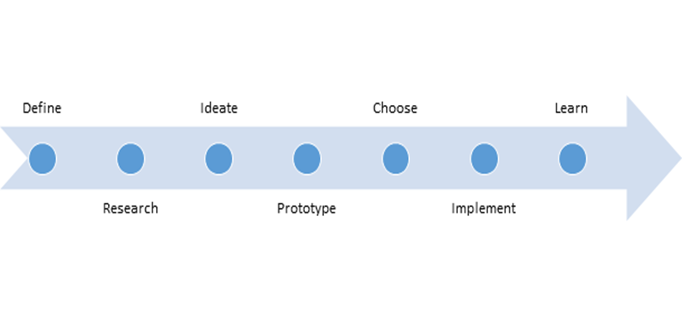Collaborative Design thinking – A unified discipline & framework for innovation

Customer expectations have evolved manifolds over the last few years and so have the brands. Brands are becoming more conscious about their visual designs and whether these designs will better the customer experience and provide instant gratification to end users.
As most brands want to MVP fast, limiting the iterations in design is very crucial. Constant iteration hampers the end goal to GTM fast and provide better experience. Moreover, if brands fail to follow agile methodologies correctly, iterations at a later stage will lead to a lot of rework on the basic product conceptualization.
Deriving right decisions without collaboration is challenging because of multiple reasons such as:
- Complex software product designs and difficulty in considering human factors, ergonomics, accessibility, interactions and so much more.
- Custom and complex user journeys demanding for a precise visual design solution which in turn requires evaluating sub systems and processes requires research.
- Multiple design decision makers and stakeholders involved at various stages leading to iterations, rework and chaos.
Hence, the only good way to avoid a lot of rework / limit iterations and achieve the end goal of informed decision making is through collaborative design thinking.
Collaborative design thinking as the name self explains is a process where:
- All the stakeholders think and brainstorm on the design aesthetics jointly
- Arrive at a common consensus and collate the data from this thought process
- Analyze the data for quick and informed decision making which helps to achieve the end goal in Specific, Measurable, Attainable, Realistic and Timely manner
Collaborative design thinking is an extension of the basic concept of design thinking.
The entire concept of design thinking basically highlights the designers’ logic, thought process, practical as well theoretical knowledge about the design principles and decision making process that he uses while crafting a prototype or visual design.
Design thinking mitigates the perils of innovation including rework at later stages by engaging the stakeholders through a series of prototypes. Refining directions on the basis of insights generated from design thinkers makes the design more full proof and real unlike designs based on the market research or historical trends.
Organizations aiming to embrace new ideas using design thinking need to unlock creative potential across organization. Design thinking adds a great deal of value to innovation. According to one of the assessments by the Design Management Institute, design-led brands such as Apple, Coca Cola, IBM and Nike have outperformed the S&P 500 by an extraordinary 219% over the past 10 years.
Considering the importance of design thinking, we have outlined below the four key elements of design thinking:
- Observe and define the problem
- Create multiple options for a better analysis
- Check the idea-killers and refine the directions
- Choose the winner and implement
Simply put diagrammatically, a design thinking framework is as follows:

Talking about collaboration in design thinking specifically, it could be a successful endeavour if some of the below considerations are followed:
1. Involve the design thinkers early – Design thinkers should be involved at the very start of conceptualization. Involve customers, partners and other design thinkers as well to broaden the team and conduct rapid experimentation. More ideas before a direction is set is the main benefit of early design thinking.
2. Consider human ergonomics – Do not cease at considering just the product features, but also ensure considering human behavior. Having a human centered design thinking can ensure engagement and recall as the designs are in sync with what end users want.
3. Ramp up the support ecosystem – It is imperative to strengthen the entire support ecosystem including budgeting cycles, new hiring and operational processes to ensure the pace of innovation in design thinking doesn’t get hampered.
4. Hand pick your design thinkers basis their nature – Partnering with customers, partners, employees and UX experts is critical, but how do you qualify them to be a part of the design thinking team? Look out for such design thinkers who are people-centric, optimistic, experimental, good observers and so on. Having right design thinkers is crucial.
Collaborating with the stakeholders might be time consuming initially, but this can significantly improve the overall design of the software products. Connect with your team, do some brainstorming and come up with a collaborative design solution that addresses issues from all the different angles.

